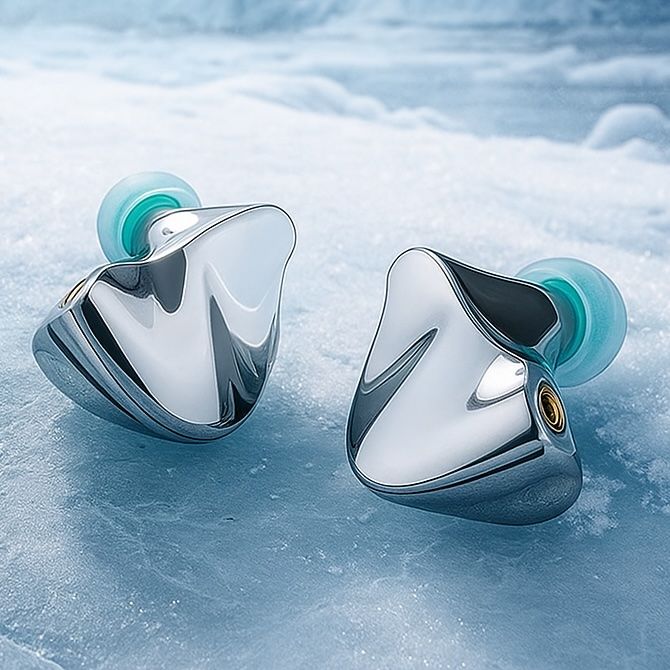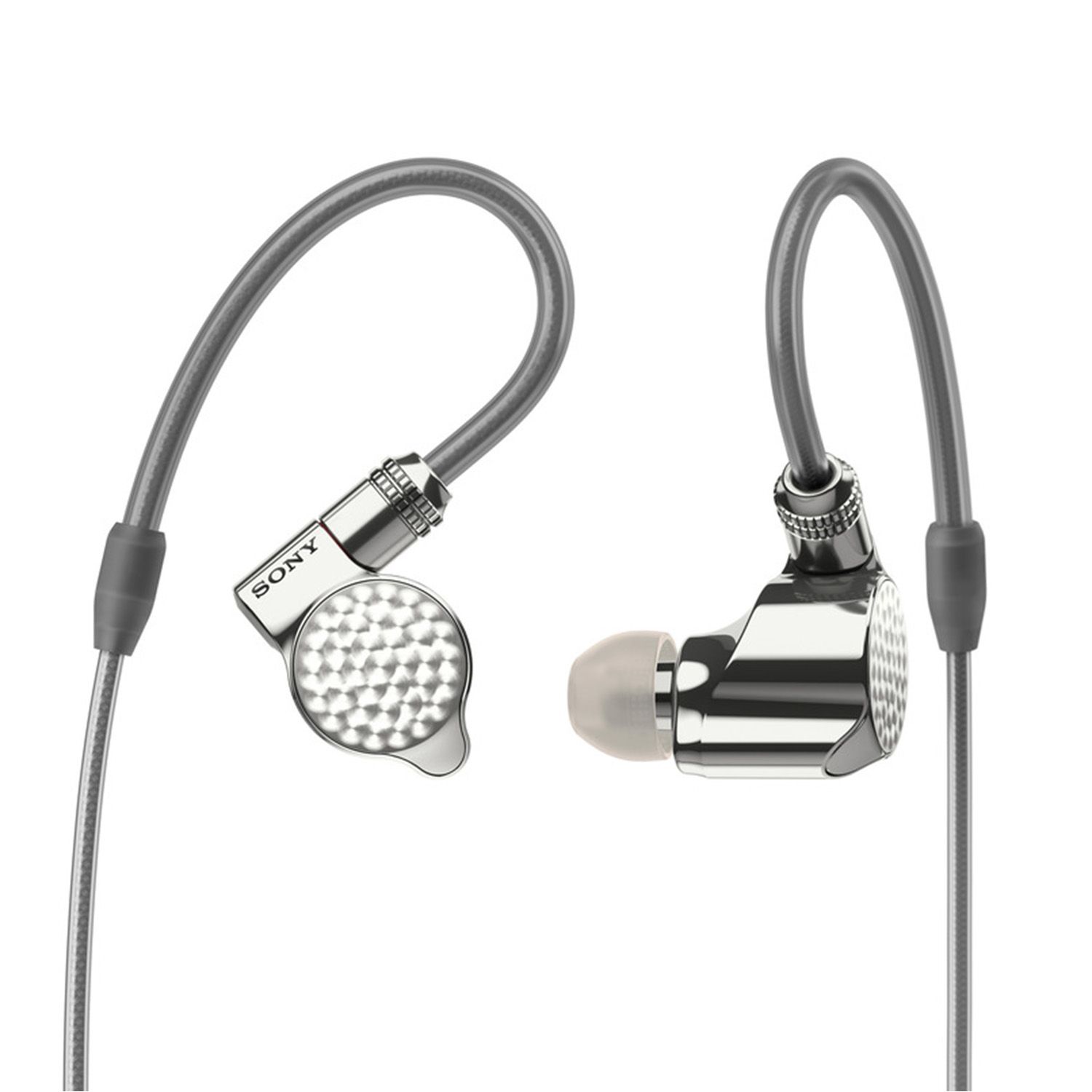Glaciervs.IER-Z1R
Sound & Specs Comparison
Information
Both IEMs are widely regarded in the audiophile community. See how they differ in terms of sub-bass response, upper mids, clarity, and overall tonality. Spider charts and rating breakdowns included.
Objective Comparison
Facts, details, stuff.
| General Info | Glacier | IER-Z1R |
|---|---|---|
| Brand | DUNU | Sony |
| Country | China | – |
| IEM Description | A powerful flagship 9‑driver tribrid IEM delivering impactful sub‑bass, detailed mids, and airy treble. Encased in mirror‑finished 904L stainless steel with DLC coating and equipped with a modular premium cable—built for both refinement and performance. | Despite their small size, the Sony IER-Z1R earphones feature a sophisticated 3-way design with two dynamic drivers and a highly precise balanced armature. The sound quality is not just high-resolution—it's ultra-high-resolution, reaching an impressive frequency response of up to 100 kHz. Housed in a precisely crafted, virtually resonance-free aluminum shell, the design ensures that all three drivers remain in perfect phase alignment. The cables are fully balanced and made from high-purity OFC copper with silver plating for maximum detail retrieval. |
| Price Level | 1.000 – 2.000 | 2.000 + |
| Housing & Driver | ||
|---|---|---|
| Driver Config | Tribrid | Hybrid |
| Driver Types | Electrostatic + Dynamic Driver + Balanced Armature | Dynamic Driver + Balanced Armature |
| Shell Material | 904L stainless steel with diamond-like carbon mirror finish | – |
| Cable | 8‑core monocrystalline copper with triple-layer insulation; white cloth sleeving | – |
| Technical | ||
|---|---|---|
| Freq Range | 5 Hz – 40 kHz | 3-100.000 Hz |
| Impedance (Ω) | 43 | – |
| Sensitivity (dB) | 109 | 103 |
| Crossover | Dual four‑way frequency crossover with acoustic/electronic control | – |
| Platform Info | ||
|---|---|---|
| Comments | 1 | 0 |
| Visit Count | 213 | 93 |
| External Reviews | 1 | 1 |
Meta Ratings
IER-Z1R delivers markedly better sound reproduction, offering a more immersive and engaging experience overall. Its tonal balance, clarity, and spatial imaging stand out clearly compared to Glacier (9.8 vs 8.2). For comfort fit, Glacier performs noticeably better (8.2 vs 6.8). IER-Z1R’s cable appears softly more premium in both aesthetics and function, from its braid quality to termination.
| Glacier | IER-Z1R | |
|---|---|---|
| Sound | 8.2 | 9.8 |
| Comfort Fit | 8.2 | 6.8 |
| Build Quality | 9.7 | 9.8 |
| Stock Cable | 8.0 | 8.5 |
| Accessories | 8.5 | 8.3 |
Sound Characteristics
Low-frequency extension on IER-Z1R feels m more natural and authoritative, while Glacier lacks some reach (9 vs 7.5). It renders bass with a greater punch and separation, where Glacier sometimes feels bloated (9 vs 7.5). It translates bass vibrations into a a more visceral experience, while Glacier lacks this tactile feedback (9 vs 8). It achieves a better warmth and coherence in the lower mids, bringing more realism to guitars and cellos (8.5 vs 7). It strikes a a better balance between presence and smoothness in the upper mids compared to Glacier (8.5 vs 7.3). It offers a greater shimmer and nuance in the lower treble, revealing micro-details that Glacier misses (9 vs 7.5). The upper treble of It extends d further, offering more sparkle and openness than Glacier (9.5 vs 8). Listeners may notice that It presents sounds with a more lateral space, giving recordings more openness than Glacier (10 vs 8.5). It retrieves micro-details s more effectively, revealing nuances that are less apparent in Glacier (9.5 vs 9). Track elements feel s more isolated and clean on It, offering clearer focus than Glacier (9.5 vs 8). It shows a better control of masking effects, maintaining clarity across frequency ranges better than Glacier (9 vs 7.5). Notes played through It feel n weightier and fuller, giving a more satisfying impact than those from Glacier (9 vs 6). Percussion and quick attacks feel m more physical and punchy on It, adding excitement over Glacier (9 vs 7.5). Listeners may experience a fewer sharp edges in 'S' and 'T' sounds with It, whereas Glacier can get fatiguing (9.5 vs 8.5). The tone quality of It feels a more organic and true-to-source than the slightly artificial flavor of Glacier (9.5 vs 7.5). Across the frequency range, It stays d more consistent in tonal balance, resulting in a smoother listen than Glacier (9 vs 7). It portrays textures in vocals and strings with a more realism, enhancing emotional depth over Glacier (9 vs 7.5).
| Glacier | IER-Z1R | |
|---|---|---|
| Sub Bass | 7.5 | 9.0 |
| Bass | 7.5 | 9.0 |
| Bass Feel | 8.0 | 9.0 |
| Lower Mids | 7.0 | 8.5 |
| Upper Mids | 7.3 | 8.5 |
| Lower Treble | 7.5 | 9.0 |
| Upper Treble | 8.0 | 9.5 |
| Sound Stage Width | 8.5 | 10.0 |
| Detail | 9.0 | 9.5 |
| Layering | 8.0 | 9.5 |
| Masking | 7.5 | 9.0 |
| Note Weight | 6.0 | 9.0 |
| Slam | 7.5 | 9.0 |
| Sibilance | 8.5 | 9.5 |
| Timbre Color | 7.5 | 9.5 |
| Tonality | 7.0 | 9.0 |
| Texture | 7.5 | 9.0 |
Tonal Signature
// Nothing to compare yet.

